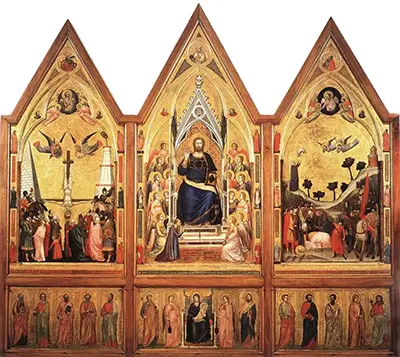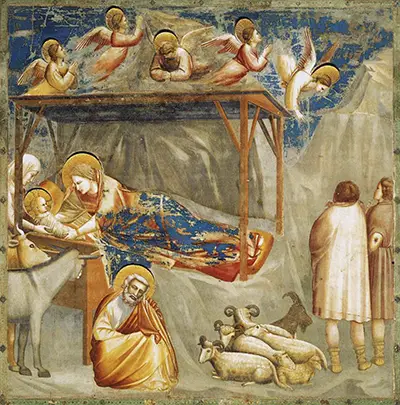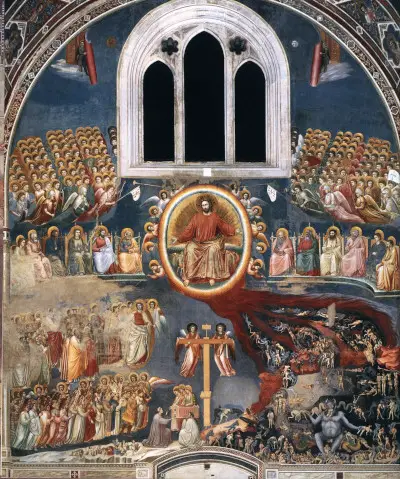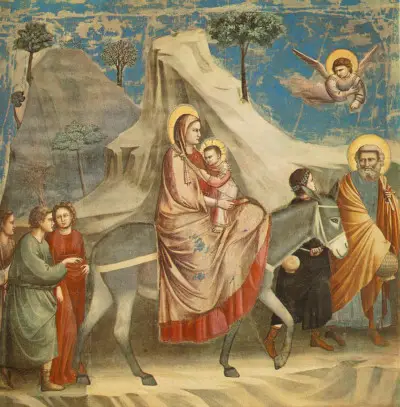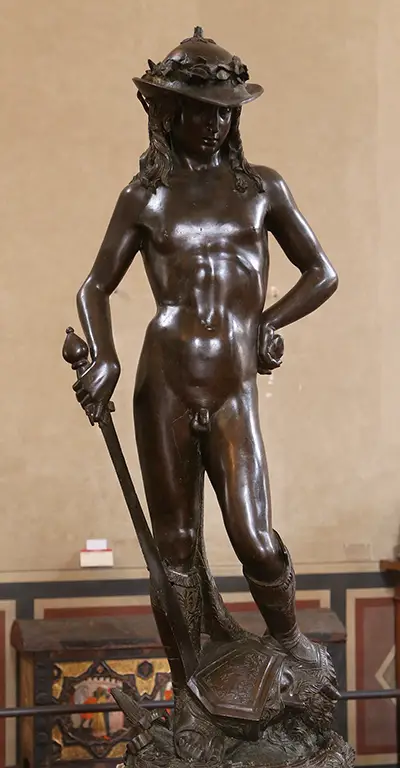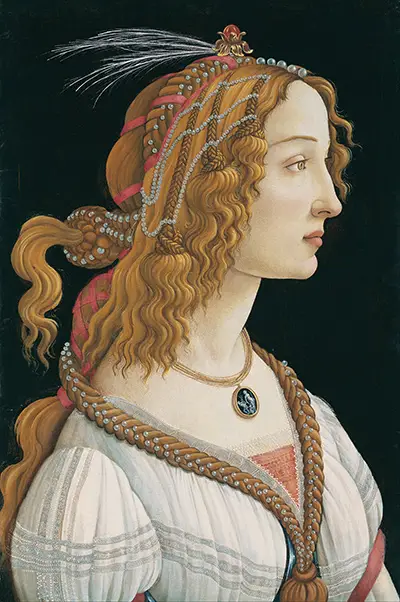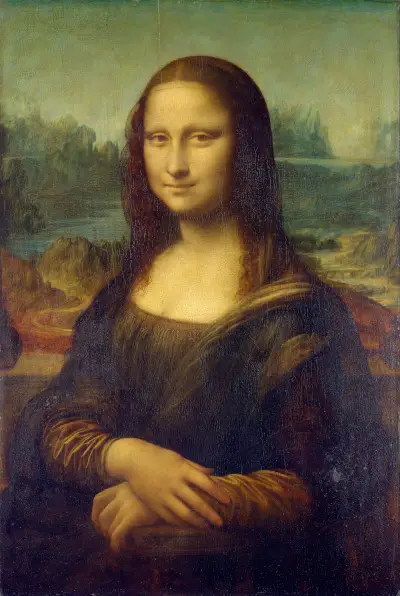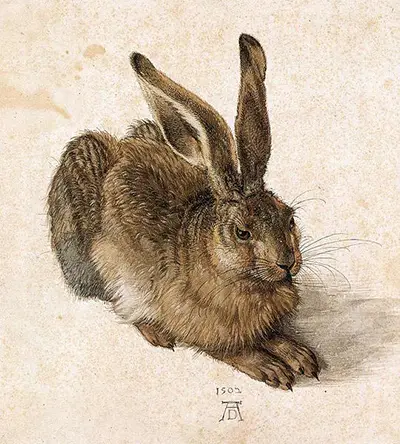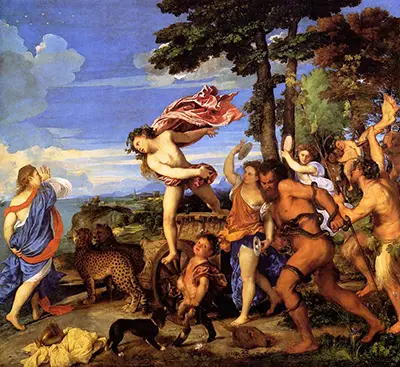Wedding Procession of Mary is a Giotto di Bondone painting from the Scrovegni Chapel in Padua.
Scrovegni Chapel series
The life of Mary received much attention within the chapel, with Giotto capturing a number of scenes directly from the Bible. The entire series, along with other artworks related to the lives of Christ and Joachim, were carried out over the period of 1304-06.
Description of the Painting
Mary is placed centrally, denoting her prominence within the narrative. She is also given a prominent golden halo, whilst her hair is platted. Her facial features are of a beautiful young woman with a slim nose and angular, feminine features.
She lifts her robe slightly to allow her to walk forwards, and Giotto takes care around her midriff to display details of the draping clothing. To the right hand side we find musical instruments being played, to celebrate this moment, whilst her friends and family stand to the left, seemingly nervous.
Architectural flourishes run along one side of the painting, providing some perspective against the row of figures below. A flurry of blue has faded from the background over time, though enough is left to understand the original balance of the work.
Preservation and Condition
One can immediately determine which parts of the work have received treatment, with some figures clearly fading, whilst others appear relatively clear and concise. Many of Giotto’s tones across these frescoes would struggle to last this length of time, and it is unlikely that he ever would have planned them to do so.
Symbolism
Mary is being led to her parents’ home, which lies to the right hand side. A palm leaf which appears from the top right of the work is believed to symbolize the impending arrival of the Lord, and the same leaf is used again in related stories.
Installation
The Wedding Procession of Mary is carefully designed around the structure of the building and consequently we find a small part of the chapel overlaps into the lower right of this painting. Giotto would have had to adapt to the existing structure of the building for a number of his paintings, though most could be delivered in a standard size along the rows of the wall.
Giotto himself would have allowed his assistants to complete parts of this painting and he would serve as supervisor, planning the overall compositions and ensuring the overall direction of the commission. It would have been impossible for him to complete each fresco in a timely manner, such was the ambitious nature of this commissioned work.
Conclusion
Wedding Procession of Mary provides another element from the Life of Mary within the breathtaking display to be found at the Scrovegni Chapel in Padua. Here we find a rare Giotto addition of musicians which adds some fun to proceedings, in what is otherwise a serious and tense scenario.
Several sketches of the original work were later uncovered which taught us of how other notable artists would study this painting in detail and attempt to learn from Giotto’s use of composition and technical detail. Today the chapel remains popular for its incredible cultural value, which has lasted thanks to some careful and skillful preservation over the centuries.
More Renaissance Artists




 Giotto.jpg)
 Giotto.jpg)
